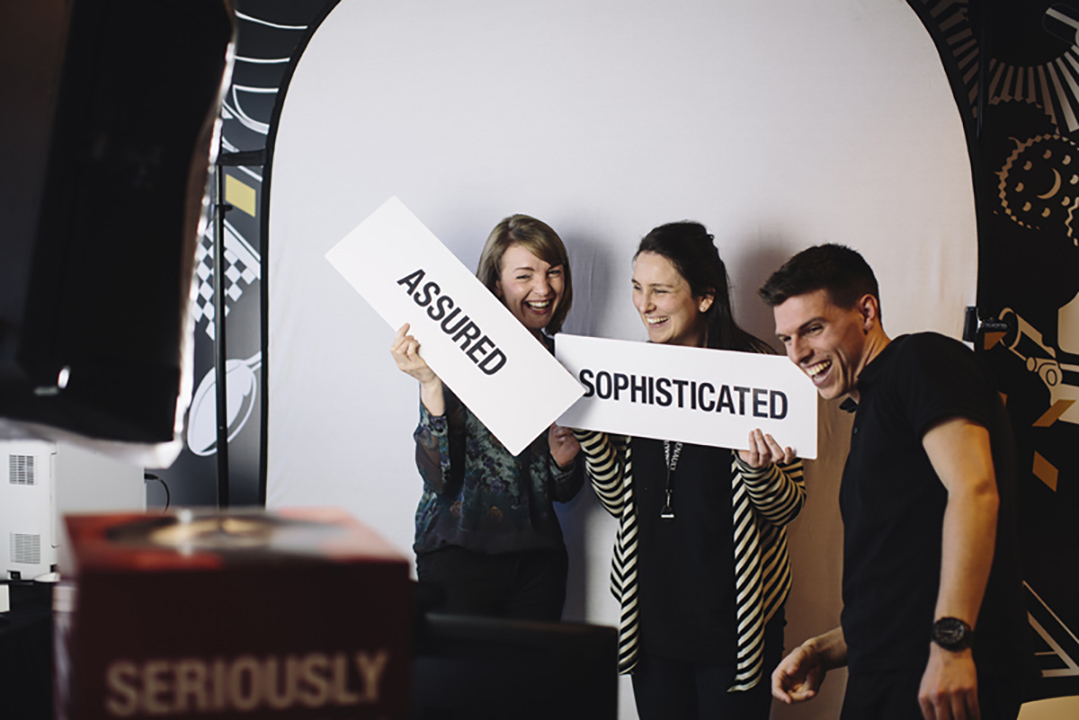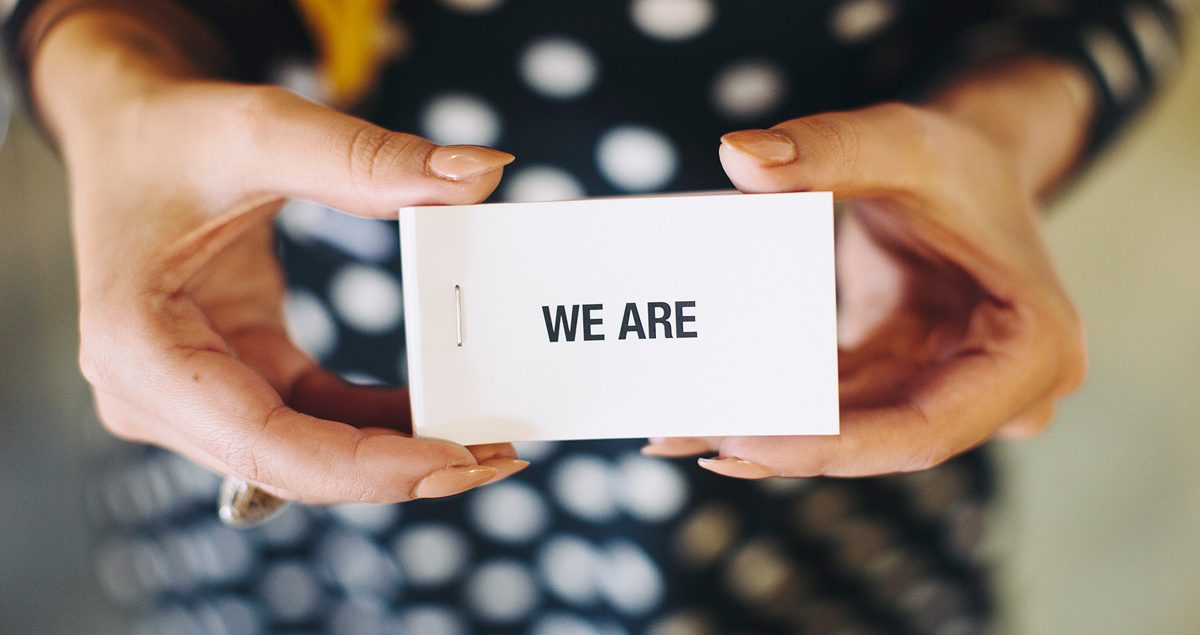Better Business (and Bottom Lines) through Brand Experience
In a softening economy, a business-wide approach to brand experience can deliver on your bottom line, writes Madeleine Preece.
In a world where brand loyalty and differentiation is hard to gain and even harder to keep, an inside-out approach is vision critical. And will deliver bottom-line results.
Until now, this has largely been seen as the responsibility of HR leaders. But the long-held belief that HR owns the employee brand and Marketing owns the consumer brand couldn’t be more wrong. There is one brand. But, like people, many facets of its personality appeal differently to its wide range of stakeholders, including—but not limited to—consumers and employees. Building a strong brand starts on the inside. Strong brands thrive when the vision is shared and driven by the CEO and executive teams, not left to HR/Marketing departments to argue over. In my experience, many executive teams don’t play well together in the sandpit — they are too busy competing.
A brand is a business-wide asset and it is a team sport (there is no ‘I’ in brand — or M or H or R…!). For businesses to thrive in today’s ever-changing marketplace, we need a ‘new normal’ style of leadership that does away with the ‘us’ and ‘them’ mentality.
“Building a strong brand starts on the inside.”
In the Radar Journal, Tod Martin writes about such a style of leadership. He says: “How you lead is difficult because leadership has become, more than ever, a team sport. A leadership team’s ability to become more adaptive requires not just individual change, but collective and coordinated change.”
Effectively, the onus should not fall solely on the marketing department — or the HR team — to lead a business through challenging times, as the brand is a business-wide responsibility. What we need are business-wide strategies creating brand experiences from the inside out. A holistic approach that reaches every stakeholder of an organisation — employees, board members, franchisees, dealers, shareholders and agency partners.
A 360° approach to brand experience
Marketers traditionally focus on consumers when designing brand experiences. But the approach is so much more than a marketing channel. Every department can create brand experiences.
Designing experiences that enable your audience to engage with your brand — smelling, tasting, touching, feeling, collaborating, influencing, communicating — has been proven to build loyalty to your business and the brand.
In the words of renowned organisational consultant Simon Sinek, “When people are financially invested, they want a return. When people are emotionally invested, they want to contribute.”
Still not convinced? Jacob Morgan, author of The Employee Experience Advantage analysed the employee engagement ratings of 250 organisations. He found those that invested heavily in employee brand experience were…
They were also twice as likely to be listed in the American Customer Satisfaction Index.
Morgan also found companies that invest in employee brand experience are 4 times as profitable — a figure supported by a Gallup poll finding that companies with highly engaged workforces outperform their peers by 147 per cent in earnings.
“An integrated brand experience strategy has the ability to act as a Trojan horse to solve business challenges.”
You get the picture. Engaged employees are just as valuable as engaged consumers — if not moreso.
But how do you develop an approach that creates both?

5 Steps to Designing Inside-Out Brand Experiences
As Marilyn Carlson Nelson, former CEO of Carlson Companies says — “If you haven’t captured the hearts of your employees, they won’t capture the hearts of the consumers.”
So let’s look at how you execute your 360° business-wide approach to brand experience.
1. Understand where you are and where you want to be
First, work out where you are. What is the current experience for our team? What’s working? What’s driving those outcomes? What’s your biggest problem right now?
Next, look to the future and establish the business and brand vision.
Then conduct research. Find out how you compare to other organisations. Who are your potential employees? How would you describe your own culture? What cultures do you admire and what are your unique propositions and strengths? What is your internal index of brand understanding and engagement?
Take the example of Google. New staff start out as ‘Nooglers’. For weeks, they are immersed in what ‘googliness’ means — the history, the learning, the rules of engagement, the vision for the organisation and more. They deep dive into the brand and where it came from, before becoming a fast-moving part of the future of Google.
2. Engage your leadership team
Work with your leadership team to prioritise brand experience. Challenge them to turn every business interaction into a rewarding brand encounter.
After all, your brand is only as strong as your weakest touchpoint.
3. Engage a ‘Brand Task Force’
Next, build a multi-disciplinary, cross-organisation team to champion brand engagement.
As a first project for this team, why not bring the brand story to life with an initiative co-funded by the marketing team? Like commissioning a brand book that can be used for all stakeholders and audiences in the induction of employees, board members, franchisees, dealers, partners and consumers.
4. Identify the strategic plan and story
Look at what’s emerging from these insights. Ask yourself what the core theme is — the seed of an idea from which all communications and activities can spring.
Develop your internal brand mission and supporting key messages. Create the internal brand experience and launch it in an educational, experiential, collaborative way. This way, you’ll on-board the business as a whole, and all the stakeholders who are key to the brand’s success. (BMW does a great job of this, with their Brand Academy program.) Make it an annual event to refresh, up-skill and inspire.
5. Test. Learn. Adapt.
Try things. Pay attention to the results, to feedback and sentiment. Take what’s working and evolve it.
There’s something to learn on every step of the journey, and it pays to demonstrate to your team that you’re watching, listening and committed to improving. Demonstrate that you appreciate your employees’ involvement. Welcome their feedback and include them in the planning.
Because this 360° approach is not just the leadership’s responsibility. All departments must deliver on the promise, with each area of the business looking at the encounters they can transform into better brand moments.
A brand is a living entity — it changes year to year, CEO to CEO, country to country, and through new employee cycles.
“If employees do not care about their company, they will in the end contribute to its demise. And it’s up to you to give them a reason to care.”
A smart investment
Building brand champions within the organisation who communicate their passion for the brand is vital for businesses looking to thrive in a climate of disruption and transformation.
As Colin Mitchell says in his Harvard Business Review article ‘Selling the Brand Inside‘, “If employees do not care about their company, they will in the end contribute to its demise. And it’s up to you to give them a reason to care.”
But it goes beyond that. An integrated brand experience strategy has the ability to act as a Trojan horse for solving your business challenges.
When you adopt this approach across the leadership team — from CFO and HR directors leading the next merger and acquisition, CIOs transforming systems and processes, or a CMO launching a new product range — everyone benefits from a passionate, brand-invested and educated team (most of all, the bottom line!) Every dollar you spend on your consumer is maximised by the investment you’re making internally — on the people who are turning your everyday business encounters into memorable, meaningful brand moments.
In a softening economy, a consistent, engaging business-wide approach to brand experience will turbo-charge your marketing investment — and ultimately deliver bottom-line results.

By Madeleine Preece
Madeleine is director of Neonormal—an independent, full-service brand experience agency. She knows that everything a business does is a brand experience, so she’s passionate about turning each one into a meaningful, memorable and measurable moment.
